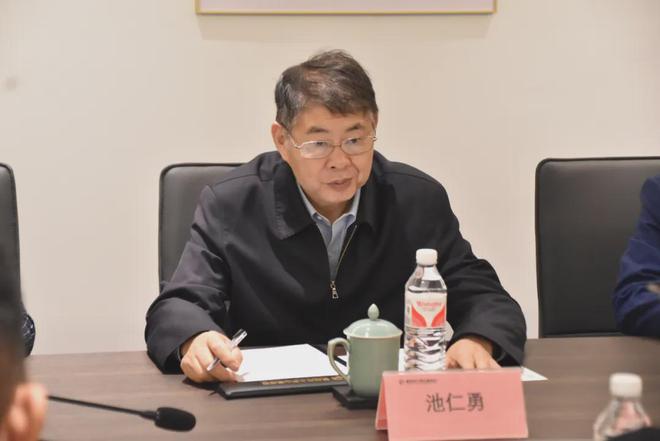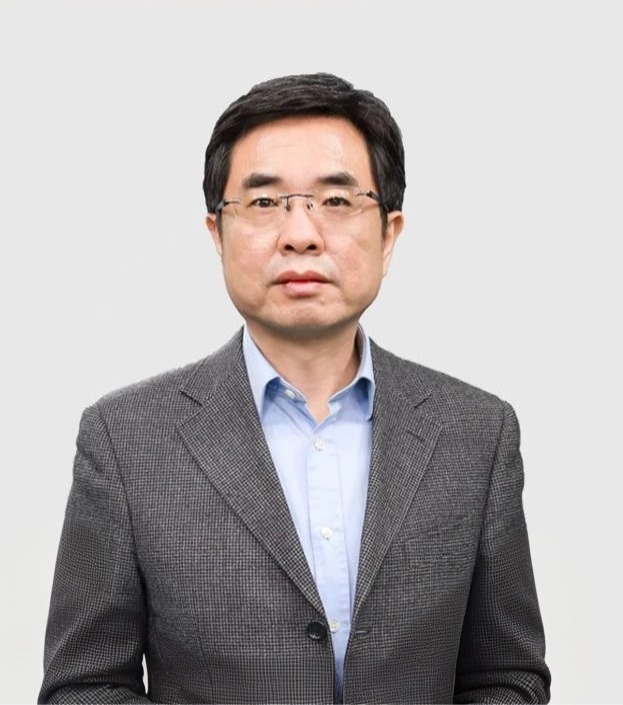近代中国桐油对外贸易研究
本书以国际市场对中国桐油的需求为中心点,梳理了近代以来中国桐油的出口规模,考察近代以来桐油贸易的发展过程、中外经销商的经营活动、运销市场地域结构与运销体系、中央和地方的管理与控制等内容。计算了桐油生产和交易的成本与利润,较为客观地评述了桐油生产、运销和出口对长江流域近代经济发展的影响。
本书较为细致地描绘了近代桐油生产种植、收购、加工、运输、检验、出口等全过程,展现了近代以来桐油生产和贸易的发展与演变。
东北新闻界反抗日本侵略史:1903-1945
本书系统爬梳了1903年至1945年四十余年间,中日两国媒介在中国东北地区这一特殊场域的博弈历程。内容架构上,以日本对中国东北实施的新闻侵略手段及步骤为经,以中国广大东北民众遭受的身心折磨及东北新闻界的艰苦抗争历程为纬,深刻剖析了日本侵华过程中,以新闻侵略为主导的文化侵略的特点、实质以及对我国东北地区造成的危害;同时将东北新闻界在不同阶段不同形式的反抗予以深入挖掘,着力凸显东北新闻界有识之士在抵抗日本侵略中的思想引领作用,进一步彰显了中华民族不屈的气节,从而丰富了东北新闻史及日本侵华史研究的学术体系与话语体系。
马克思和卢梭的思想关系研究
本书旨在厘清马克思和卢梭的思想关系,主要考察马克思思想来源中的卢梭因素。卢梭形成了一套以“公意”为核心的政治哲学体系,康德和黑格尔是卢梭政治哲学遗产的继承者,直接或间接地影响马克思思想的形成和发展。卢梭对马克思的影响贯穿其一生,马克思对卢梭的态度经历了从赞赏到批判再到超越的历程。本书尝试论证的是具有直接相关性的两个结论:1.马克思和卢梭的思想关系,呈现的是从卢梭到马克思不断深化和拓展的理论谱系,卢梭的公意、康德的善良意志、黑格尔的普遍意志、马克思的物质利益具有内在一致性;2.卢梭是与黑格尔同等重要的理论来源者,是马克思转向物质利益和唯物主义的关键人物。
生态环境损害金钱给付义务的整体化研究
本书从环境司法裁判实践出发,考察了某一主体对同一环境违法行为同时履行环境税费、生态环境损害赔偿、惩罚性赔偿、行政罚款、刑事罚金等金钱给付义务这一现象;进而运用法经济学中的外部性理论,分析这些金钱给付在负外部性矫正上的同质性,得出“各种金钱给付的叠加使用应以弥补外部成本为基准”的结论;最后从立法衔接、环境司法、环境财政等方面构建基于此结论的制度体系。
北魏礼制变迁研究
This book tries to break away from the traditional five rites(Ji,Xiong,Bin,Jun,Jia)structure of the exposition mode,and does not try to examine the five rites of the Northern Wei Dynasty in an all-encompassing but static way.Instead,on the premise of portraying a macroscopic picture of the Northern Wei Dynasty rites,it adopts the method of connecting points with a line to select four rites in turn that are connected in time and involve the collision,conflict,fusion,and even transformation of the primitive rites of the Northern Wei Dynasty with the Chinese canon.Under the premise of“point”: Yu Zhen,Shen Bian,Jitian Biao and Jiuxi,we dig deep into the meaning of the points,clarify the political and economic joints behind them,and then connect them with a line to outline the evolution of the ritual system of the Northern Wei Dynasty,and reveal the hidden and obvious criteria for choosing the ritual system under the vein.
The picture of the ritual system of the Northern Wei Dynasty should be an organic composition of the two: the first is to the dynasty rituals as the core of the main rituals,and the second is the main rituals outside of the miscellaneous rituals.Among them,the rituals of the Northern Wei dynasty could be divided into two parts: the Western Suburbs Ritual as the core,Baiden ancestor worship,the May 5 Connoisseur's Revels,the July 7 Revels,etc.as the auxiliary flank of the nomadic rituals of the origins of the rituals(and also perfected after the entry into the Central Plains); the suburb of the mound of the subdivision of the difference(the northern and southern suburbs,the Hua nqiu Square Zephyr)as the core,the first silkworms of the Bird's Nest,the Sun and the Sun and the Sun and the Moon,and the five times of the day to meet the gas of the star-vigilant Huaxia rituals,which evolved out of the Northern Wei Dynasty Ritual of the two rituals(the primordial ritual and the Huaxia Festival),three core(western suburbs,northern and southern suburbs and Huanqiu Fangze)collision,conflict,integration and even transformation of the complex situation.
Yuzhen corresponds to the stage when Takumi entered the state from the tribal alliance,and it arose and functioned in response to the mechanism of the tribal alliance.Academics speculate that the viewpoint that Yu Zhen is an official title is debatable.Feizhen is intended to distinguish the power of the early state of the division of field and hierarchical order,within the four grades and the rise and fall of the regime with the growth of constant change: from the tribal alliance to the regime in the early stages of Feizhen used to maintain the balance of power of the Tuoba monarch and the tribal chiefs,nobles; along with the regime of the transition from the clan king to the imperial politics,especially after the unification of the Emperor Taibu North China,the momentum of the imperial power is obvious to the Emperor Xiaowen,Feizhen become After Emperor Xiaowen reformed the system,the symbols of the ritual division of the Xianbei color were deflated and entered the Sha Tuo sequence,and Yuzhen went from the high position of the official title in the third year of Feng Xi's Taihe self-written S.0996 Miscellaneous Abhidharma Sutra Volume 6-Inscription(hereinafter referred to as“Inscription”)to the high position in the nineteenth year of the official title in the sequence.
From the tribal alliance into the stage of state power,Tuoba capital Pingcheng and a North China,to the Xiaowen Emperor reformed the system of rituals,strengthened the Chinese rituals at the same time,began to clean up the old customs of Tuoba.After the death of Empress Wenming,the contradiction between Emperor Xiaowen and the conservative Tuoba aristocrats came to the forefront,with the imperial family represented by the ten surnames of the latter,opposed to the reform of the system of rituals when the focus is not to absorb the Chinese canonical system,but the elimination of the old customs of the Xianbei people,the demise of the surface rituals,representing the loss of proprietary privileges behind the scenes.Therefore,before the plan of moving the capital in the 17th year of the reign of Emperor Taihe was finalized,the object of the ritual system was selected to be examined,which was the ritual institution of the Ministry of Shen,which was rarely thought of by the scholarly community,and which was covered with a veil of secrecy.On the basis of the examination of the existence of the Ministry of the Shens,the administration of the canons,the establishment of the officials,the issue of the Eight Ministries involved in the Tongjian,their subsequent destinations,and their relationship with the Ancestral Temple,etc.,we focus our attention on the historical example of the Minister of the Ministry of the Shens,Wang Chen,who in the process of relocating the temple of the Lord of the An Temple,was blocked by the representative of the old-fashioned aristocracy,Tuoba Pi,who objected to the participation of the Han Chinese commoner name Wang Chen in moving the temple to keep the purity of the imperial imperial ten-named sacrificial privileges,and thus we may have a glimpse of the historical situation of the reformation of the Emperor Xiaowen.In this way,we can see how the old customs of the Xianbei and the Chinese canonical system changed in the political game of Emperor Xiaowen's reorganization.
After moving to Luoyang,Emperor Xiaowen's ritual reforms were in full swing,and the old system of Zongzhou and the Han story were intertwined,but they were by no means fetishized,but rather plated with their own characteristics under the ultimate goal of strengthening imperial power.Taking the Tianzi/Emperor's Bowfield Rites as the object of investigation,and placing the orientation of the Bowfield of the Northern Wei Dynasty in a long period of time,it can be found that during the Zhou,Qin,Han and Tang Dynasties,there existed the trajectory of the transformation of the Bowfield's orientation from the southern cultivation of the old Zongzhou system to the eastern cultivation originating from the Han story,and that the internal cultivation of the eastern cultivation also revealed the influence of the southeast and the eastern position.There is a trajectory of transformation from the southern cultivation of the“old system of Zongzhou”to the eastern cultivation of the“story of the Han family”.The orientation of the fields in Pingcheng and Luoyang of the Tuoba Wei dynasty were both based on the southern plowing of the Zhou,and it was under the banner of the Zongjing and the Restoration of the Ancient World that they complemented their shortcomings and took advantage of their strengths to fly down the others; their systems were inherited by the Yuwen Zhou,and were eventually passed down to the Yang Sui dynasty.
After the reform of Taihe,Chinese ritual system gradually according to the prominent position,but when it comes to the military and national key,especially to maintain the imperial power,the rulers more changes in the Chinese story,in order to facilitate the harnessing of power,respect for the king,the principle of practicality steadily prevails,the application of nine tin in disguise will be a clear example.Ninetin since the beginning of the Western Han Dynasty that is debatable.Normalization of the nine tin actually began to come out of the Rite and Wefts-Containing Wenjia; began to come out of the time period when Wang Mang received the nine life of the tin(the first five years)to the Baihu Tong into a book(Jianchu four years)between.The Rites and Wefts-Containing Wenjia standardized the names of the Jiuxi under the influence of the prophetic trend in the early Eastern Han Dynasty,while the Baihu Tong quoted the text of Rite and Wefts-Containing Wenjia to remove the influence of Wang Mang's usurpation of the throne by using the Jiuxi and to return to the Jiuxi as the source of the original function of the Nine Functions of the Zongzhou Nine Functions in praising meritorious ministers,and to relate them to titles and land,and to explain the basis for the combining and sorting of the Jiuxi,thus officially prophetizing the prophetically-enhanced Jiuxi.In the 19th year of Taihe,echoing the demise of Yu Zhen,the representative of the Chinese materialization of rituals and music of the nine tin in the Northern Wei Dynasty,and its form of posthumous award after the death of the ministers can be described as a disguised application of the original function of the East Han nine tin commendation of the ministers,revealing the gradual release of imperial power from the control of the aristocracy to establish their own independent authority,and turn to limit the privileges of the nobility of the political development of the basic trend.Northern Wei nine tin and the Eastern Jin and Southern Chancellor of the differences between the nine tin,behind the essence of the position of imperial power; and for the goal of the imperial service,decided that its return to the original function can only be superficial,and will eventually with the decline of the imperial power and inevitably fall into the Chancellor of the nine tin.
Keywords: Northern Wei Dynasty,ritual change,Yuzhen and Shen Ministers,Jitian and Jiuxi
公务员变革行为形成机制与推进路径研究
本书立足我国当前面临的国内外发展环境,在对变革行为研究进行系统文献综述的基础上,基于资源视角、激活视角、自我决定视角和匹配视角等多理论视角,从领导驱动力、制度障碍、制度激励和内生动力等方面深入地讨论中国公务员变革行为的形成机制,最后根据相关实证结果以及中国干部队伍建设和管理的实践,从操作层面提出提升我国公务员变革行为的有效路径和政策建议,以期为我国干部队伍建设和国家治理现代化提供来自微观层面的推进对策与发展思考。
组织与技术:20世纪50年代浙江海洋渔业集体化研究
本书以浙江省档案馆以及温州、台州、宁波、舟山市档案馆的渔业档案为基础,从组织与技术两个角度考察浙江海洋渔业集体化的演进,进而丰富集体化研究的类型,深化集体化研究的空间。在政府的介入整合下,随着水产经营体系和集体经济体系的建立,20世纪50年代浙江海洋渔业经济实现了重大变革。敲䑩与机帆船作为这一时期出现的重要渔业技术,对浙江沿海渔区生产力的发展产生了深刻影响。从较长的历史脉络中来看,集体化改变了近代的海洋渔业生产秩序,使国家权力在海洋渔业领域获得了空前的增长;中国共产党建立了独特的财政汲取模式,并以持续的财政投入来构建权力基础。
中等职业教育质量监测机制研究
在全面建设高质量教育体系的新时代,质量监测越来越成为教育理论和教育实践关注的重点问题。中等职业教育基于在现代职业教育体系中的基础地位,更需要通过质量监测推动其质量提升。本书系统分析了中等职业教育质量监测的宏观背景、理论成果、政策历程、实践形态,充分论证建构中等职业教育质量监测体系的意义和依据,并在此基础上,深入研究中等职业教育质量监测的主体联动机制、指标构建机制、过程管控机制、结果应用机制,尝试回答中等职业教育质量谁来监测、用什么监测、如何监测,以及如何用好监测结果等问题,为科学构建中等职业教育质量监测体系提供理论参考和操作范式。
本书对职业教育管理决策、职业院校质量发展、职业教育理论研究具有重要的参考价值。








